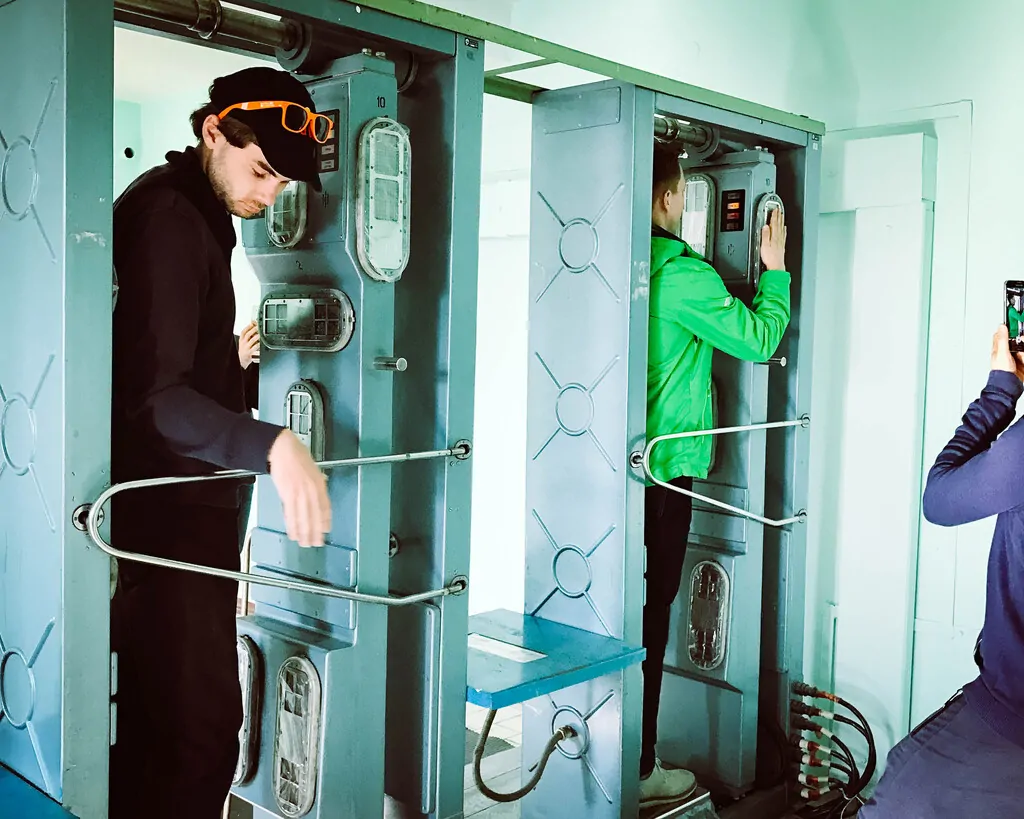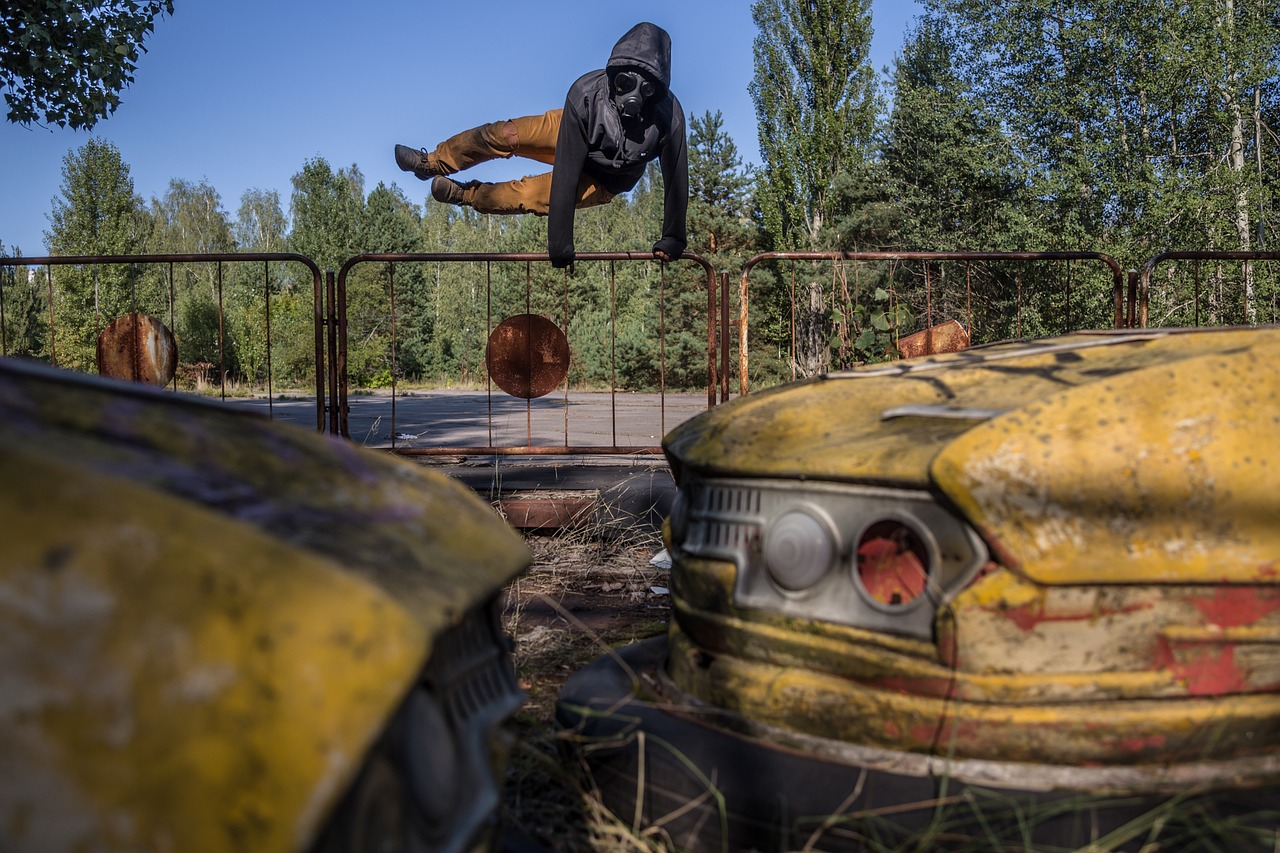Chernobyl, a name forever etched in history as the site of one of the worst nuclear disasters, has become a unique and somewhat controversial destination for extreme tourism. While the idea of visiting a place with such a dark past may intrigue some adventurers, there are concerns about safety and ethical considerations.
Exploring Chernobyl today offers a profound and sobering Chernobyl experience, attracting those seeking an unconventional Chernobyl adventure travel that combines history, eerie landscapes, and a glimpse into the aftermath of the disaster.

Is it safe to visit Chernobyl?
In this travel blog, we will explore the safety aspects of visiting Chernobyl and whether it’s a responsible choice for Chernobyl extreme tourism.
People also read:
Things to Be Careful of in Isla Mujeres: A Tourist’s Safety Guide
The Chernobyl Disaster
In April 1986, a catastrophic explosion at the Chernobyl Nuclear Power Plant in Pripyat, Ukraine, released a massive amount of radioactive material into the environment.
The consequences of the disaster were devastating, with widespread health and environmental impacts that continue to affect the region to this day.

Large areas of Ukraine, Belarus, and Russia were contaminated with radioactive materials, primarily cesium-137 and strontium-90. The local ecosystem was significantly affected, with mutations and reduced biodiversity observed in the affected regions.
Radioactive materials within the trees in the nearby Red Forest led to fires in the years following the disaster, releasing additional radioactive particles.
Safety Concerns
Radiation Levels
The most significant concern for visitors to Chernobyl is radiation exposure. So is it safe to visit Chernobyl? The site still contains radioactive materials, and the radiation levels can vary significantly depending on the location. Tour operators are well-aware of these dangers and have safety measures in place to protect tourists.

Checking radiation levels on the way out.
Visitors are provided with radiation detectors, and guides ensure that tourists stay in low-risk areas. It’s essential to follow the rules and guidelines provided by your tour operator to minimize your exposure to radiation.
Strict Regulations
Ukraine has established strict regulations and guidelines for visiting Chernobyl’s Exclusion Zone. Tourists are not allowed to enter high-risk areas, and specific routes are designated to ensure safety.
It’s essential to adhere to these regulations and not wander off on your own.
What to Wear to Chernobyl?
The Chernobyl dress code has been designed with safety in mind. The gist is that you have to be entirely covered except for your face, neck, wrists, and hands.
The Chernobyl Dress Code
- Pants Only (no skirts, leggings, or shorts).
- Long sleeve shirt (no tank tops or short sleeve shirts).
- Closed-toed shoes (no sandals or flip-flops).
- A hat
Professional Guides
To ensure the safety of tourists, visiting Chernobyl is only possible through organized tours with licensed guides who are knowledgeable about the site’s history and the associated risks. These guides will help you navigate the area safely.
Professional guides for Chernobyl tours play a crucial role in ensuring the safety and educational value of the visits. These guides are highly trained and knowledgeable individuals who are responsible for leading tourists through the Chernobyl Exclusion Zone.

The red forest inside the Chernobyl Exclusion Zone
Here are some key aspects of professional guides for Chernobyl tours:
- Licensing and Qualifications – Professional guides for Chernobyl tours must be licensed by the Ukrainian government and authorized to lead tours in the Exclusion Zone. To obtain this license, guides typically undergo extensive training and pass rigorous examinations. They are well-versed in the history of the Chernobyl disaster, radiation safety protocols, and the specific regulations governing the area.
- Safety and Radiation Awareness – Guides are trained to prioritize the safety of tourists and themselves. They have a deep understanding of radiation levels and how to use radiation detection equipment. They ensure that visitors stay within safe areas and avoid high-risk zones where radiation levels are elevated.
- Route Planning – Guides plan the tour routes carefully to maximize safety and minimize radiation exposure. They are well-informed about the locations and landmarks within the Exclusion Zone that can be visited safely. Visitors are not allowed to deviate from the designated routes, and guides strictly enforce this rule.
You may also read:
Is Tulum Safe? Unveiling the Truth About Travel Safety in Tulum, Mexico
- Education and Interpretation – Chernobyl guides provide valuable insights into the history and significance of the disaster. They explain the events leading up to the accident, its consequences, and the ongoing efforts to manage the site. Guides help tourists appreciate the gravity of the tragedy and its impact on the region.
- Language Skills – Many Chernobyl tours cater to international tourists, so guides often speak multiple languages to accommodate a diverse clientele. This ensures that visitors can fully understand the information and instructions provided during the tour.
- Emergency Response – Guides are trained in emergency response procedures. While serious incidents are rare, guides are prepared to handle unexpected situations, including medical emergencies or other safety concerns.
Ethical Considerations
While the safety concerns are addressed by responsible tour operators, ethical questions surrounding extreme tourism in Chernobyl remain. Some argue that turning a disaster site into a tourist attraction can be seen as disrespectful to the victims and survivors of the tragedy.
It’s crucial to be sensitive to the historical significance of Chernobyl and approach your visit with respect and empathy.
Visiting Chernobyl as part of extreme tourism can be a unique and eye-opening experience, but it comes with safety considerations and ethical responsibilities. With proper guidance and adherence to regulations, you can explore this hauntingly beautiful yet tragic place while minimizing your exposure to radiation.
Extreme travel to Chernobyl often involves hiring a specialized Chernobyl tour guide, offering unique insights into the Chernobyl disaster and catering to the growing niche of Chernobyl disaster tourism, which falls under the umbrella of Chernobyl extreme tourism.
Ultimately, the decision to visit Chernobyl is a personal one, and it’s essential to weigh the potential risks and rewards carefully.





Leave a reply